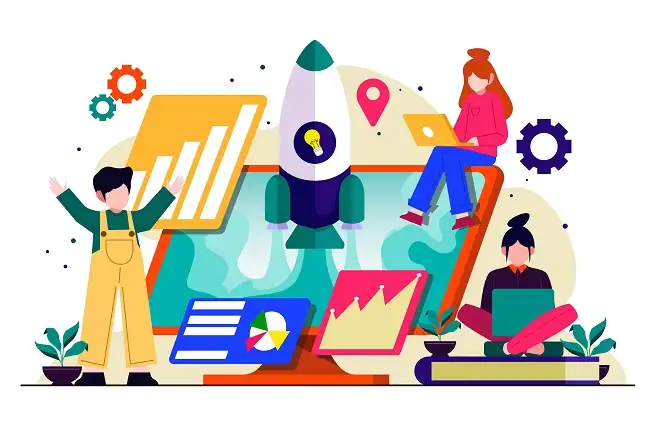Education is the foundation of our society. It shapes our future by molding young minds and equipping them with the skills necessary to thrive in an evolving world. Today, more than ever, education reform is essential. This blog post explores how these reforms can impact various stakeholders, including employees, educators, parents, and policy makers.

We will uncover key aspects of education reform and how it can drive positive changes for future generations.
The Need for Education Reform
Addressing Inequities
One of the primary reasons for education reform is to address inequities within the system. Many students, particularly from marginalized communities, lack access to quality education. By reforming educational policies, we can ensure that every child, regardless of their background, has the opportunity to succeed.
Preparing for the Future
The world is changing rapidly, and education must evolve accordingly. Traditional teaching methods may not equip students with the skills they need for the future. Education reform aims to incorporate modern technologies and teaching methods to better prepare students for the challenges ahead.
Enhancing Teacher Support
Teachers are the backbone of the education system. However, they often face numerous challenges, including limited resources and support. Education reform can provide teachers with the tools and training they need to excel in their roles.
How Education Reform Impacts Employees
Skills Development
Employers are constantly seeking individuals with the right skills to drive their businesses forward. Education reform can ensure that students develop the skills that are in high demand in the job market, such as critical thinking, problem-solving, and digital literacy.
Lifelong Learning
The concept of lifelong learning is becoming increasingly important. Education reform can promote continuous learning opportunities, allowing employees to upskill and stay relevant in their careers.
Workplace Adaptability
A modernized education system can produce graduates who are more adaptable to changing workplace environments. This adaptability is crucial in a world where industries are continually evolving.
Impact on Educators
Professional Development
Education reform can provide educators with ongoing professional development opportunities. This ensures that they stay updated with the latest teaching methodologies and technologies, ultimately benefiting their students.
Improved Resources
By reallocating funds and resources, education reform can enhance the teaching environment. This includes better classroom materials, access to technology, and improved facilities.
Collaborative Teaching
Reform can encourage a more collaborative approach to teaching, where educators work together to share best practices and innovative ideas. This collective effort can lead to a more dynamic and effective education system.
The Role of Parents in Education Reform
Active Involvement
Parents play a crucial role in their children’s education. Education reform can encourage greater parental involvement , ensuring that parents are active participants in their child’s learning journey.
Informed Decisions
Reforming the education system can provide parents with better information about their choices. This includes understanding the benefits of different types of schools, such as a public charter school in Dacono, which may offer unique advantages over traditional schools.
Supporting Learning at Home
Education reform can also focus on equipping parents with the tools and resources they need to support their children’s learning at home. This holistic approach can significantly enhance a child’s educational experience.
Policy Makers and Education Reform
Policy Development
Policy makers have the power to drive significant changes within the education system. By developing and implementing policies that prioritize education reform, they can create a more equitable and effective system.
Funding Allocation
Effective education reform requires adequate funding. Policy makers must ensure that resources are allocated appropriately to support reform initiatives, such as updating curriculum, improving school infrastructure, and providing teacher training.
Data-Driven Decisions
Using data to inform decisions is crucial in education reform. Policy makers can leverage data to identify areas that need improvement and to measure the impact of implemented reforms.
Real-World Examples of Successful Education Reforms
Finland’s Education System
Finland is often cited as a model for successful education reform. Their approach focuses on equality, trust in teachers, and a student-centered learning environment. These reforms have led to consistently high performance in global education rankings.
Singapore’s Education Excellence
Singapore has also achieved remarkable success through education reform. By emphasizing teacher quality, rigorous standards, and a strong focus on STEM education, Singapore has created an education system that produces top-performing students.
The United States’ Charter Schools
In the United States, the charter school movement has introduced innovative approaches to education. Public charter schools, like the public charter school in Dacono , offer alternative educational models that can cater to diverse student needs and promote academic excellence.
Challenges in Implementing Education Reform
Resistance to Change
One of the biggest challenges in implementing education reform is resistance to change. This can come from various stakeholders, including educators, parents, and policy makers, who may be wary of new approaches.
Resource Constraints
Reforming the education system requires significant resources. Limited funding and competing priorities can hinder the implementation of effective reforms.
Measuring Success
Evaluating the success of education reforms can be challenging. It often requires long-term studies and comprehensive data collection to determine the true impact of the changes.
The Future of Education Reform
Personalized Learning
One of the emerging trends in education reform is personalized learning. This approach tailors education to individual student needs, allowing them to learn at their own pace and according to their unique strengths and interests.
Technology Integration
The integration of technology in education is set to increase. Technologies like artificial intelligence and virtual reality can transform the learning experience, making it more interactive and engaging.
Global Collaboration
Education reform is not confined to national borders. Countries can learn from each other’s successes and failures, fostering a collaborative approach to improving education worldwide.
Conclusion
Education reform is crucial for shaping the future of our society. By addressing inequities, preparing students for the future, and supporting educators, we can create a more effective and equitable education system. Whether you’re an employee, educator, parent, or policy maker, your involvement in education reform can make a significant difference. Together, we can drive the changes needed to ensure that every child has the opportunity to succeed.
For those interested in exploring more about how to get involved in education reform or to learn more about innovative educational models, consider reaching out to local education organizations or participating in community discussions. Your voice and actions can contribute to a brighter future for all students.







